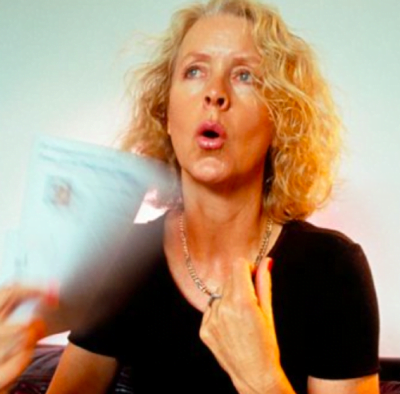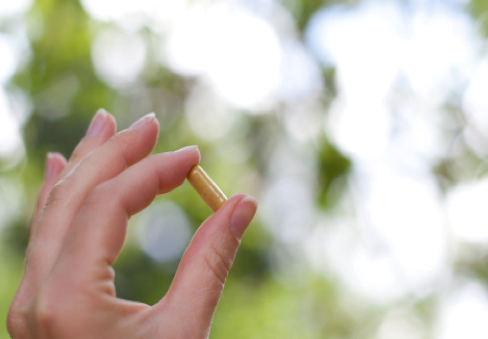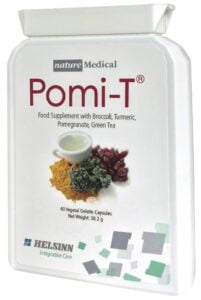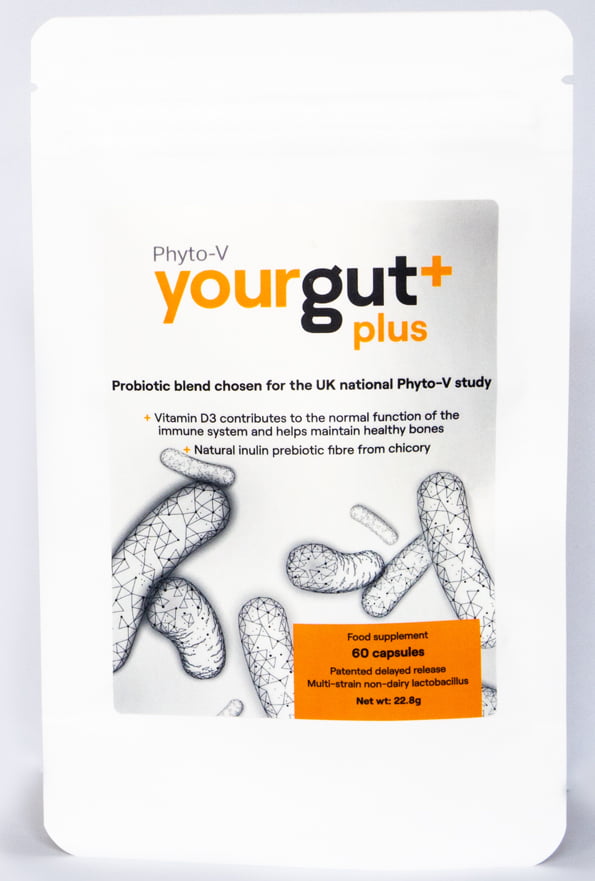Hot flushes and menopausal symptoms

Causes of Hot Flushes
Women entering the menopause often experience troublesome hot flushes due to a drop in oestrogen production from the ovaries. Women with cancer may experience premature menopause induced by chemotherapy or surgery, yet those with breast cancer are denied oestrogen replacement therapy because of concerns about potential recurrence. Drugs such as tamoxifen or aromatase inhibitors are also known to exacerbate vasomotor symptoms, as well as other menopausal issues such as weight gain, joint pain and vaginal dryness
Standard medical management
For women without breast cancer, the most successful medical treatments are oestrogen hormone replacement therapies (HRT). When lifestyle measures have failed, these are certainly worth considering, but they do increase the risk of breast cancer if taken for more than 10 years. For women with breast cancer, progesterones such as megestrol acetate and cyproterone acetate help, but they can cause fluid retention, weight gain and increased risk thromboembolism [Loprinzi]. In women, the anti-depressant venlafaxine helps to reduce intensity [Loprinzi] but has no effect on men [Quella, Vitolins]. Published research has shown that trying different hormone drugs may help (e.g. switching from tamoxifen to aromatase inhibitors or even switching between different brands) [Thomas].
Lifestyle and self-help strategies
The situations which trigger or exacerbate a hot flush can vary between people; you may find it useful to keep a diary to note when you experience one so that you can identify any pattern. If you know when to expect hot flushes, you can be better prepared. Otherwise, here are some practical tips which may help.
Clothes & environment
- Smokers suffer significantly worse hot flushes – giving up will help you
- Before entering a warm room, take off your coat or warm clothing
- Avoid wearing polyester or other man-made fibres
- Try wearing layers of clothing that can be taken off or put on as your body temperature changes
- Use layers of bedclothes (natural fabrics are better) which you can remove as required
- Carry water vapour sprays or moist wipes to help lower your skin temperature
- Use pleasant-smelling oils such as peppermint for its cooling properties or lavender for its relaxing effect
- Carry a handheld fan to use as soon as a flush starts
- Place a small electric fan on a desk to help lower your skin temperature
- Take plenty of cool baths and showers
- Regular saunas help some people (making sure you cool down afterwards)
Exercise
Although initially exercise could trigger a flush, regular exercise in the longer term may help reduce hot flushes. It will certainly help with gut health. Choose an activity that you enjoy and feel comfortable with. It’s important to try to exercise at least three times a weak at an intensity which gets you hot and sweaty before making sure you cool down properly afterwards.
Relaxation techniques
Stress can increase the number and intensity of hot flushes. Being anxious about hot flushes could make your symptoms worse. Knowing what to expect and being prepared will help you feel more in control and ease your anxiety. Relaxation therapy can reduce stress and flushes. Hot flushes usually come and go over short periods, so try to relax and wait for the sensation to pass. You may find it helps to imagine yourself in a cool place, for example by the sea, when you feel a hot flush coming on. It may also help to know that although hot flushes are uncomfortable for you, other people are unlikely to notice them happening.
Acupuncture
Standard and electroacupuncture have been extensively investigated, and a number of RCTs have reported that they help ease the severity and frequency of hot flushes at a level equal to venlafaxine. Its benefits appear to last up to 2 years.
Diet and Nutrition
- Some people report that spicy foods trigger hot flushes, while others say they can help
- Eating foods which improve gut health such a live yogurt, kimchi and miso soup
- Avoid overeating large meals or eating too fast as this stimulates sweating
- Sugary foods and drinks can cause swings in blood glucose
- Hot drinks can be a trigger – open a window, take your coat & scarf off
- Being overweight can make it more difficult to regulate body temperature
- Avoid stimulants such as caffeine
- Drink plenty of healthy fluids, particularly if you are sweating a lot
- Avoid too much alcohol
- Avoid alcoholic drinks with a high sulphite content ( e.g. some wines and ciders)
Supplements

Evening primrose: Many people have found that taking evening primrose oil helps with hot flushes, although it may take several months before any improvement is noticed. Evidence from clinical trials is lacking apart from an underpowered, small trial which reported a minor benefit [Farzaneh]. Apart from the calorie content, it is regarded as generally safe.
Vitamin and mineral supplements Vitamin E, selenium and vitamin B6 have provided relief for some people. Again, evidence is lacking, and minerals and Vitamin E did not help vasomotor symptoms among women investigated in one trial [Barton]. There is evidence that women with lower vitamin D in their body have worse hot flushes [Greendale]
Soya and other phyto-oestrogen-rich foods: Phytoestrogens are natural polyphenol chemicals found in plants such as soya beans, chick-peas, lentils, whole grains, peanuts and flaxseed. They are similar in structure to the female sex hormone oestrogen. Studies show that women whose diets are high in phyto-oestrogens have a lower incidence of hot flushes and other menopausal symptoms [Greendale]. Diets high in phytoestrogens are safe, and two large studies from the USA and China have demonstrated that, by suppressing the oestrogen receptors on hormone-sensitive cells and reducing the risk of abnormal growth and potential change into cancer, they are associated with a lower risk of breast cancer relapse [Boyapati].
Despite the benefits of these whole foods, concentrating them into capsules has not demonstrated prospective benefits in the five RCTs conducted so far [quella, van patten, MacGregor, Faure]. Furthermore, some safety concerns have been raised over phytoestrogenic extracts following a study from New York which reported that blood taken from women receiving a high dose soy extract supplement (genistein) increased markers of proliferation (growth) when added to breast cancer cells grown in a laboratory. Another study found that a phytoestrogenic isoflavones supplement altered uterine wall thickness in primates [Foth]. Although low to moderate rises in blood phytoestrogens are helpful, too high a concentration overrides the beneficial effect. Until further studies are performed evaluating the cancer risk of these supplements, they are best avoided.


“After watching a TV program featuring Pomi-T some months back, I thought I would give it a go, simply to help get rid of free radicals. After taking it for a short while I noticed that I no longer had ANY hot flushes. I racked my brain trying to work out why this had happened, as I hadn’t taken any prescribed medication for this. The only change I had made was taking Pomi-T twice daily. I was amazed and thought I would stop them and see what happened. Within a day or two, the flushes came back, oh boy!
I started the Pomi-T immediately and within two days they had completely stopped again. Over the six months I have taken them, I have not had a single flush. I would never at the outset have thought for one moment this would have happened. I cannot thank you enough, flushes are debilitating and this truly has transformed my life”.

The lactobacillus strains have the most evidence of a benefit. So, When considering a supplement, ensure they are mainly lactobacillus strains, are from reliable UK manufacturer, they contain built in prebiotics such as inulin from chicory, the daily dose is at least 10 billion colony forming units and they are carried in a slow release capsule. In view of the evidence fro vitamin D, mentioned above, a combination with Vitamin is very sensible. One supplement which meets all these criteria is called Yourgutplus+ highlighted in the adjacent picture (read more).
References:
Farzaneh F et al 2013. The effect of oral evening primrose oil on menopausal hot flashes: a randomized clinical trial. Arch Gynecol Obstet; 288 (5): 1075-9.
Pruthi S et al 2012. A Phase III, Randomized, Placebo-Controlled, Double-Blind Trial of Flaxseed for the Treatment of Hot Flashes. Menopause 19 (1): 48-53.
Harris P 2002. Prevalence and treatment of menopausal symptoms among breast cancer survivors. J Pain and Symptom Management: 23 (6): 501-9.
Thomas R et al. Examining quality of life issues in relation to endocrine therapy for breast cancer. American Journal of Clinical Oncology, 2003. 26(4): p. 40-4.
Thomas R et al. Giving patients a choice improves quality of life: A multi-centre, investigator-blind, randomised, crossover study comparing letrozole with anastrozole. Clinical Oncology (2004) 16: 485-91.
Love R et al. Symptoms associated with tamoxifen treatment in postmenopausal women. Arch Int Med 151 (1991), pp. 1842–47.
Whiteman M et al. (2003) Smoking, body mass ad hot flushes in midlife women. Obstrt Gynecol 101: 264-72.
Loprinzi CL, et al., Megestrol acetate for the prevention of hot flashes. New England Journal of Medicine., 1994. 331: p. 347-352.
Loprinzi CL, et al., Pilot evaluation of venaflaxine hydrochloride for the therapy of hot flashes in cancer survivors. Journal of Clinical Oncology, 1998. 16: p. 2377-2381.
Boyapati SM et al. Soy food intake and breast cancer survival: a follow up of the Shanghai Breast Cancer Study. Bst Can Res and Treat 2005;92: 11–7.
Richardson J and Thomas R. Complementary and Alternative Medicine Evidence On-Line For Cancer. Brit J of Can Man. 2005, Volume 5 (3) 34-42.
Barton D et al., Prospective evaluation of vitamin E for hot flashes in breast cancer survivors. Journal of Clinical Oncology., 1998. 16: p. 495 – 500.
Goldberg R et al., Transdermal clonidine for ameliorating tamoxifen-induced hot flashes. Journal of Clinical Oncology. 1994. 12: p. 155-58.
Nesheim B et al. Reduction of menopausal hot flashes by methyldopa: a double-blind crossover trial. Eur J of Clinical Pharm, 1981. 20: p. 413-16.
Vitolins M et al. 2013 RCT to asses the impact of venlaflaxine and soy protein on hot flushes and quality of life in men with prostate cancer. JCO 48 1432-40
Quella SK et al., Evaluation of soy phytoestrogens for the treatment of hot flashes in breast cancer survivors: an NCCTG trial. JCO, 2000. 18: p. 1068-74.
Faure ED, et al. Effects of a soy extract on hot flushes: a multicentre, double-blind, randomized, placebo-controlled study. Menopause, 2002. 9(5): p. 329-34.
Quella SK et al. Pilot evaluation of Venlafaxine for hot flashes in men undergoing androgen ablation therapy for prostate cancer. J of Urology, 1999. 162: p. 98-102.
Smith J, et al. Black Cohosh for menopausal symptoms in women with breast cancer: A systematic literature review. http://rccm-host.wmin.ac.uk/cameo/
Zierau O et al (2002) Antiestrogenic activities of Cimicifuga racemosa extracts. J Steroid Biochem Mol Biol 80: 125-30.
Blumenthal M. et al. (1998) The complete German commission E monographs: therapeutic guide to herbal medicines. Austin, TX: American otanical Council.
Bodinet C 2002. Influence of cimicifuga racemosa on the proliferation of estrogen recepter-positive human breast cancer cells. Breast Cancer Res and Treat 76: 1-10.
Borrelli f. and Ernst E. (2002) Cimicifuga racemosa: a systematic review of its clinical efficacy. European Journal of Clinical Pharmacology, 58: 235-241.
Huntley A. and Ernst E. (2003) A systematic review of herbal medicinal products for the treatment of menopausal symptoms. Menopause, 10 (5): 465-476.
Greendale G.A. (1999) The menopause. Lancet 1999, 353: 571-80.The Relationship between Vitamin D and Vasomotor Symptoms During the Postmenopausal Period. Clin Lab. 2020 Jul 1;66(7). doi: 10.7754/Clin.Lab.2019.191116. PMID: 32658424.
Bao T, et al. Patient outcomes in women with breast cancer in a RCT of acupuncture in reducing aromatase inhibitor-induced symptoms. Cancer. 2014;120(3):381–89.
Bokmand S. Acupuncture relieves menopausal discomfort in breast cancer patients: a prospective, double blinded, randomized study. Breast. 2013;22(3):320–323.
Deng G, et al. Randomized, controlled trial of acu- puncture for the treatment of hot flashes in breast cancer patients. J Clin Oncol. 2007;25(35):5584–5590.
Hervik J. Quality of life of breast cancer patients on anti-estrogens, 2 years after acupuncture treatment: a qualitative study. Int J Womens Health. 2010;2:319–325.
Liljegren A. Reducing HF with acupuncture in breast cancer patients treated with adjuvant tamoxifen: a RCT Breast Can Res Treat. 2012; 135(3):791–98.
Nedstrand E. HF decrease in women with breast cancer randomized to treatment with applied relaxation or electro-acupuncture: Climacteric. 2005;8(3):243–250.
Frisk J et al. Long-term follow-up of acupuncture on HF in women with breast cancer: a RCT. Climacteric. 2008;11(2):166–174.
MacGregor CA et al A RCT oral soy supplements for treatment of menopausal symptoms in patients with breast cancer. Eur J Cancer. 2005;41(5):708–14.
Van Patten CL et al. Effect of soy phytoestrogens on HF in postmenopausal women with breast cancer: a RCT J Clin Oncol. 2002;20(6):1449–55
Liu J., Burdette J. E., Xu H. et al. 92001) Evaluation of estrogenic activity of plant extracts for the potential treatment of menopausal symptoms. J Argic Fod Chem 49 : 2472-2479.
Foth, D et al. Effects of mammalian and plant estrogens on mammary glandsand uteri of macaques. Ame Society for Clinical Nutrition, 1998. 68: p. 1413S-1417S.
